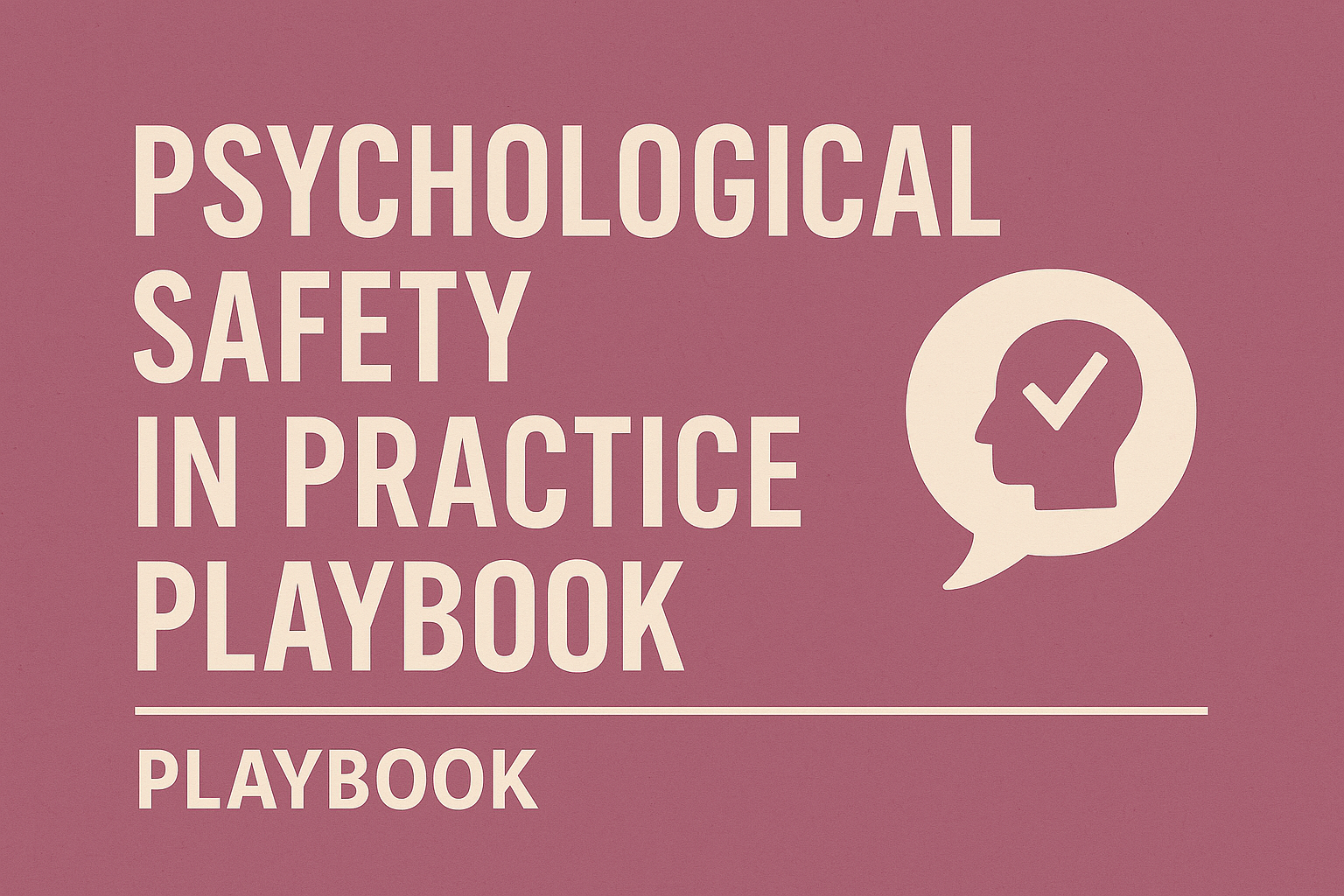Playbook : Psychological Safety in Practice Playbook

🌐 Purpose
To help engineering teams foster environments where people feel safe to speak up, admit mistakes, ask questions, challenge ideas, and be their authentic selves without fear of negative consequences. Psychological safety is the foundation for high-performing, innovative, and inclusive teams.
⚖️ Principles
- Everyone has a voice that deserves to be heard
- Mistakes are opportunities for learning, not punishment
- Constructive dissent is a signal of engagement, not disloyalty
- Leaders shape safety by what they say, do, and tolerate
- Safety must be practised intentionally and continuously
✅ What Psychological Safety Looks Like
- People feel safe saying “I don’t know” or “I need help”
- Feedback flows in all directions - up, down, and across
- Mistakes are shared openly and treated as learning moments
- Team members challenge decisions or norms without retaliation
- Questions are welcomed, not brushed aside
⚡ Practices That Build Psychological Safety
1. Ritualise Check-Ins
- Start meetings with quick emotional or energy check-ins
- Use round-robins to give everyone a voice
2. Invite Questions Proactively
- Say: “What might I have missed?” or “Who sees it differently?”
- Pause after asking for input to give people time to respond
3. Normalise Learning Moments
- Share your own mistakes and lessons learned
- Reward vulnerability and honesty with support, not silence
4. Create Protected Spaces
- Use team retros, 1:1s, or anonymous forms to surface concerns
- Establish rules of engagement that ensure respectful discourse
5. Act on Feedback Transparently
- Close the loop - show how team input leads to real change
- Don’t punish feedback that’s hard to hear
6. Celebrate Curiosity and Dissent
- Publicly thank those who raise difficult issues or challenge status quo
- Highlight how different perspectives improve outcomes
🔹 Common Anti-Patterns to Watch For
| Behaviour | Impact | Alternative |
|---|---|---|
| Interrupting or dominating discussions | Silences diverse voices | Use facilitation and structured turns |
| Mocking small mistakes or questions | Suppresses curiosity | Model curiosity and empathy |
| Blaming individuals in reviews | Erodes trust | Focus on systems and learning |
| Ignoring feedback | Creates apathy | Acknowledge and act on input |
| Celebrating only "rockstars" | Devalues team contribution | Recognise team wins and collaboration |
🤝 Leader & Team Roles
- Leaders: Set the tone, invite dissent, protect contributors
- Facilitators: Model inclusive behaviours in meetings and rituals
- Peers: Reinforce safety through encouragement, support, and respect
🔬 Signals of Progress
- Increased participation in meetings and retros
- More questions and feedback from junior team members
- Transparent discussions of risk, uncertainty, or failure
- Improved team sentiment in engagement surveys
- Faster resolution of interpersonal tension
🔑 Governance Link
This playbook supports:
- Policy: Psychological Safety First, Inclusive & Diverse Engineering Culture
- Standards: Foster Blameless Culture, Conduct Feedback Loops, Encourage Open Communication, Protect Against Harmful Behaviours
📖 Further Reading
- "The Fearless Organization" – Amy Edmondson
- Google Project Aristotle – Traits of Effective Teams
- Atlassian's Team Health Monitor Toolkit
- "Radical Candor" – Kim Scott
- Engineering Inclusion: Camille Fournier’s writing